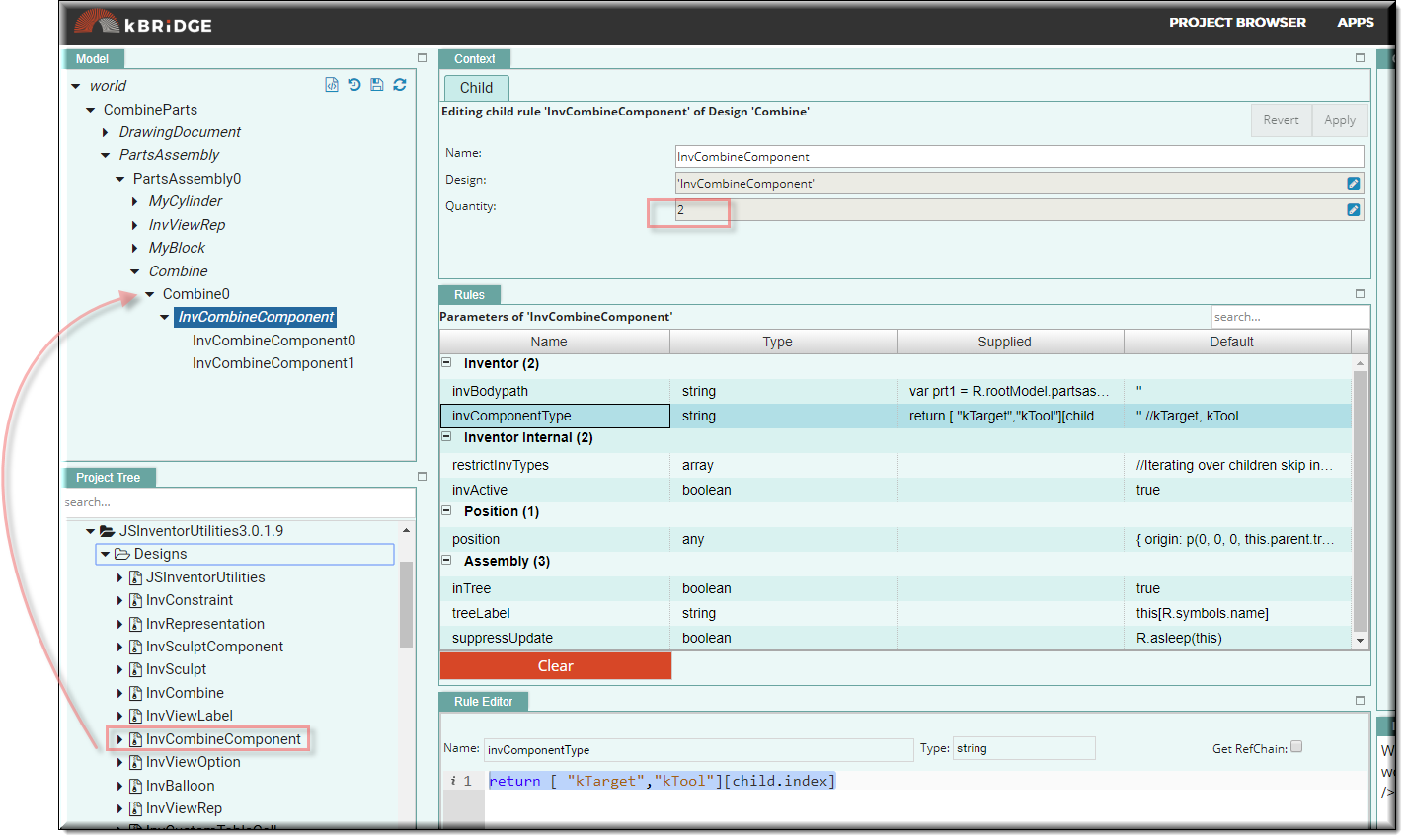Description
This mixin contains the invBodypath and the invComponentType that supplements the creation of a Combine feature. The invBodypath needs the path and name of the 2 parts (See example).
The invComponentType needs to know which part is the kTarget and which part is the kTool (See example).
Mixins
InvObjectMixin
RULE NAME |
DESCRIPTION |
TYPE |
DEFAULTS |
CATEGORY |
FLAGS |
invBodyPath |
A complete string path starting with the component name and pointing up to the solid body, separated by a dot. Example: var prt1 = R.rootModel. var prt2 = R.rootModel. return [prt1,prt2][child.index] |
String |
""
|
Inventor |
Cached |
invComponentType |
Component Type within an assembly. This component represents a Target or Tool. |
String |
"kTarget" |
Inventor |
Cached |
![]()
Project Example:
In your kBridge Examples Projects folder, open the project called ‘Table_KB_Inventor_Example’.
Expand the CombineParts folder , expand the Models folder, right click ‘CombineParts’ and set as Root.
Reference Location:
"world.combineparts.partsassembly.partsassembly0.combine.combine0.invcombinecomponent.invcombinecomponent0"
Link: https://knowledgebridge.engineer/projects
In the following example, a design has been created named ‘Combine.’ BaseAssembly and InvCombine were mixed in.
Then InvCombineComponent was dragged into ‘Combine0’ from the InventorUtilities
(See InvCombine for more detail).
The quantity is set to ‘2’.

Depending on what value is set for invBooleanOperationType in Combine, the result will display 3 different operations: kCutOperation, kJoinOperation, or kIntersectOperation. Example are below.


